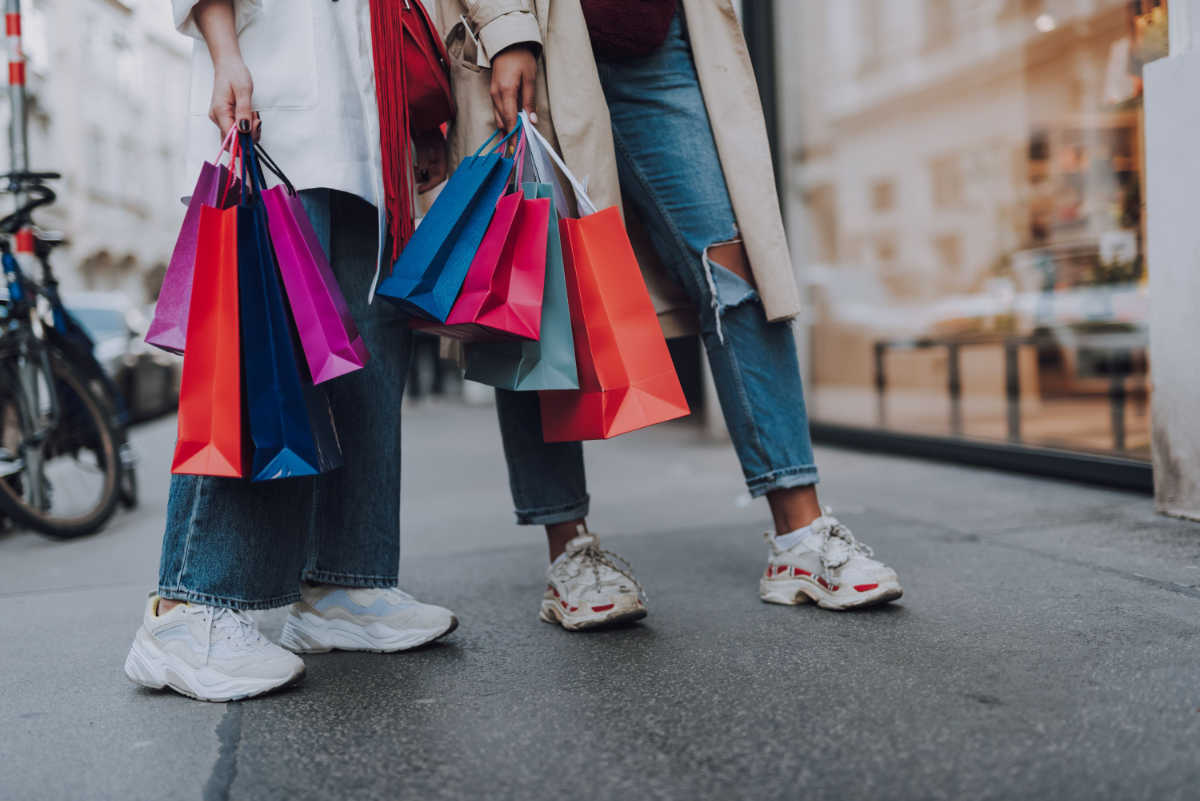With increasing pressure to do more to tackle the effects of climate change, shopping without a conscience has become just as unfashionable as carrying disposable coffee cups and supping on single-use plastic bottles.
Every item of clothing we bring into our homes can pose an ethical conundrum, as it could have been treated with chemicals and dyes which can be harmful to the planet. Then there are the people making the clothing to consider.
One of the most difficult things about trying to be more sustainable is knowing where to start and, more importantly, how to shop – especially if you’ve come to rely on those next-day deliveries dropping through your letterbox.
Broadly speaking, ethical clothing takes into consideration how the items are made, including labour conditions, product quality, waste generated and whether the materials used are biodegradable or not.
Whatever your fashion needs, there are many ways you can fill the gaps in your wardrobe without compromising on your ethics. Here are a few simple ideas to get you started…
1. Organise a clothes swap
View this post on Instagram
With garment rental platforms on the rise and clothes-swapping circles popping up in local communities, sharing clothes is becoming an important part of how we prevent unworn items ending up in landfill.
Hosting a clothes swap with friends, where people get together to exchange their unwanted clothes, is a great way of freeing up wardrobe space and updating your style – without paying a penny. It also means those ill-fitting or ‘last season’ pieces you’d normally throw away are given a new lease of life elsewhere.
2. Watch out for ultra-low prices
Ethically made clothing often costs more than fast fashion items – but this is because the manufacturing labour is paid fairly and the materials are sourced sustainably. Low-paid labour is a way for manufacturers to keep their costs down and be competitive, and super-cheap prices could be an indicator of unethical practices.
Ultimately, we should be prepared to pay what a piece of clothing is worth, if the materials and labour are sourced ethically. If the price of that £1 bikini or £8 pair of jeans seems too good to be true, it’s possibly because it is.
3. Buy second hand instead of new
View this post on Instagram
From dresses to suits, jeans to T-shirts, you can pick up pretty much anything at second-hand markets, vintage boutiques or charity shops.
Shopping second hand limits textile waste and, since used clothes come from all decades, and trends are pretty cyclical, you can often find a rare, one-of-a-kind item that stands out from the crowd.
4. Shop your own wardrobe
View this post on Instagram
Ever feel like you have a wardrobe bursting at the seams with clothes, but still have nothing to wear? The problem isn’t the items you own, but the way you’re looking at them.
Shopping your own wardrobe involves discovering different ways to style your existing clothing to get further wear out of pieces you think you’ve grown tired of.
Try testing out new colour palettes, layering different textures and even customising existing pieces with some DIY embellishment. Platforms like Pinterest and Instagram are a great way to get inspiration on how to style items you already own in a new way.
5. Look for trusted labels
View this post on Instagram
Being an eco-conscious consumer doesn’t mean you have to quit shopping forever. A number of brands are working to combat the detrimental effects of the fashion industry and helping to curb environmental damage. For example, E.L.V. denim creates pairs of jeans from deadstock materials, while People Tree make all of their clothes from environmentally-friendly materials.
Certifications from third-party organisations like Fairtrade, B Corporation and WFTO are good signs that a brand has positive ethics. And those looking to buy organic clothing made using natural fibres can be reassured by the Soil Association or Global Organic Textile Standard (GOTS) logo.
6. Get to know brands’ CSRs
View this post on Instagram
Most brands will have a CSR (Corporate Social Responsibility) statement on their policy page, although be aware that some may mention their Fairtrade policies, but only carry a few Fairtrade pieces in their collections.
Apps like Good On You are useful as they cut through the PR fluff, rating the environmental impact of the brands in your wardrobe and helping you make better decisions when you’re shopping. The app uses its own data, as well as certifications from Fairtrade and GOTS, and reports from NGOs like Greenpeace to evaluate hundreds of brands and help consumers understand how ethical each retailer is.
7. Ask yourself if you really need it
View this post on Instagram
One of the best things you can do for the planet is to make mindful decisions about how you spend your money.
Too often, we just spend money without stopping to think, “Should I buy it?”. If you’re the type of person who gets drawn in by a sale item, start asking yourself this simple question when you’re adding items to your shopping basket.
You’ll surprised at how many impulse buys you don’t really need – and how many clothes you’ll save from being chucked into landfill.
Best-selling sustainable fashion books
Looking for more inspiration? Check out our list of best-selling Amazon products!
- Wearme Fashion (Author)
- English (Publication Language)
- 176 Pages - 03/04/2021 (Publication Date) - Promopress (Publisher)
- Little, Tyler (Author)
- English (Publication Language)
- 200 Pages - 09/25/2018 (Publication Date) - New Degree Press (Publisher)
- Henninger, Claudia E. (Author)
- English (Publication Language)
- 242 Pages - 07/29/2022 (Publication Date) - Routledge (Publisher)
- Mugabi, Paula N. (Author)
- English (Publication Language)
- 272 Pages - 05/01/2023 (Publication Date) - For Dummies (Publisher)
- David McInnis (Author)
- English (Publication Language)
- 192 Pages - 07/09/2020 (Publication Date) - Bloomsbury Visual Arts (Publisher)
Last update on 2024-04-10 / Affiliate links / Images from Amazon Product Advertising API
You may be interested in…
This article may include affiliate links to products and services where we may receive a small fee to support the running of this site if you make a purchase or is a sponsored article from one of our select editorial partners providing valuable advice and information to our readers.




































































